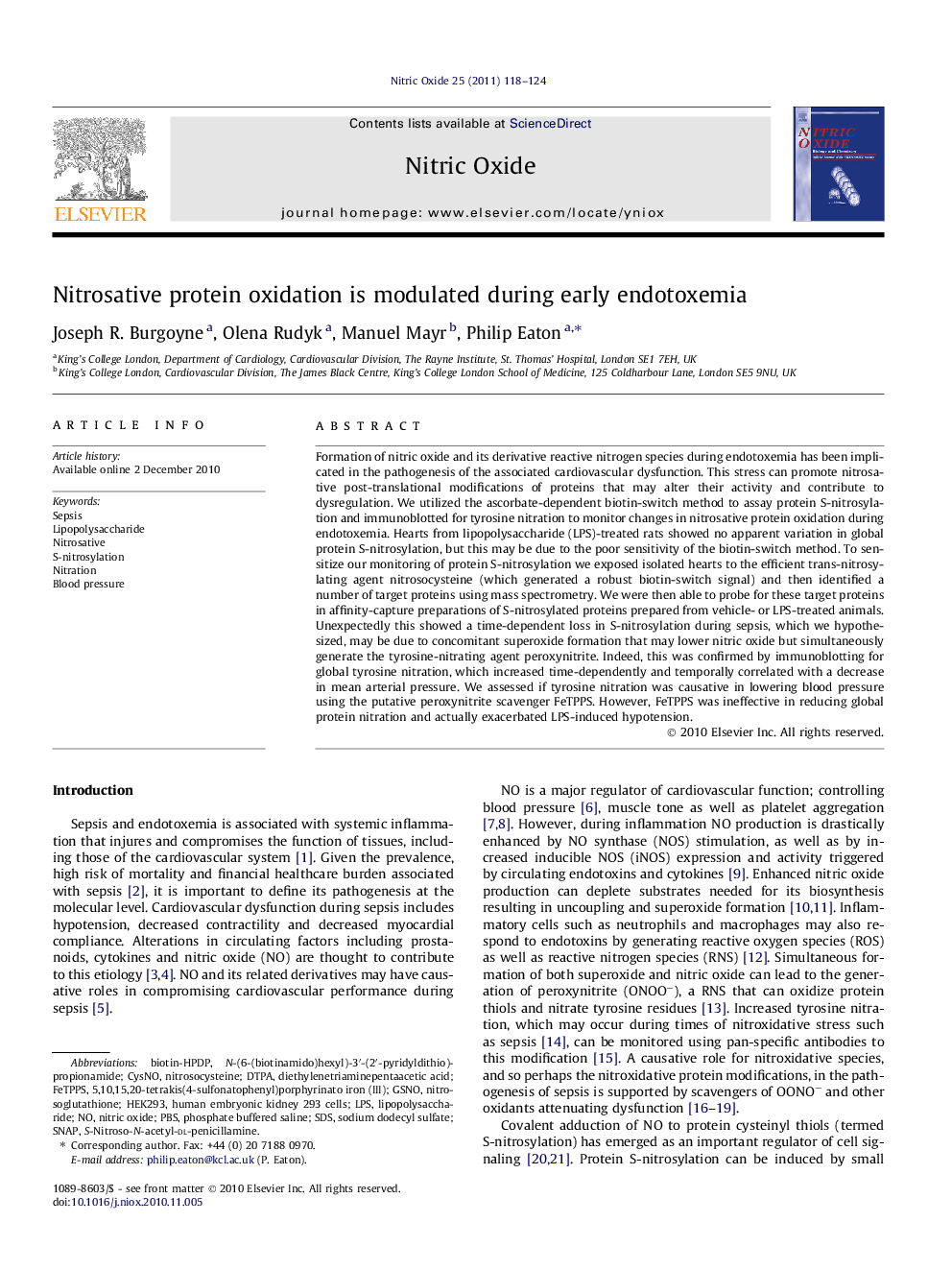| Article ID | Journal | Published Year | Pages | File Type |
|---|---|---|---|---|
| 2001608 | Nitric Oxide | 2011 | 7 Pages |
Formation of nitric oxide and its derivative reactive nitrogen species during endotoxemia has been implicated in the pathogenesis of the associated cardiovascular dysfunction. This stress can promote nitrosative post-translational modifications of proteins that may alter their activity and contribute to dysregulation. We utilized the ascorbate-dependent biotin-switch method to assay protein S-nitrosylation and immunoblotted for tyrosine nitration to monitor changes in nitrosative protein oxidation during endotoxemia. Hearts from lipopolysaccharide (LPS)-treated rats showed no apparent variation in global protein S-nitrosylation, but this may be due to the poor sensitivity of the biotin-switch method. To sensitize our monitoring of protein S-nitrosylation we exposed isolated hearts to the efficient trans-nitrosylating agent nitrosocysteine (which generated a robust biotin-switch signal) and then identified a number of target proteins using mass spectrometry. We were then able to probe for these target proteins in affinity-capture preparations of S-nitrosylated proteins prepared from vehicle- or LPS-treated animals. Unexpectedly this showed a time-dependent loss in S-nitrosylation during sepsis, which we hypothesized, may be due to concomitant superoxide formation that may lower nitric oxide but simultaneously generate the tyrosine-nitrating agent peroxynitrite. Indeed, this was confirmed by immunoblotting for global tyrosine nitration, which increased time-dependently and temporally correlated with a decrease in mean arterial pressure. We assessed if tyrosine nitration was causative in lowering blood pressure using the putative peroxynitrite scavenger FeTPPS. However, FeTPPS was ineffective in reducing global protein nitration and actually exacerbated LPS-induced hypotension.
